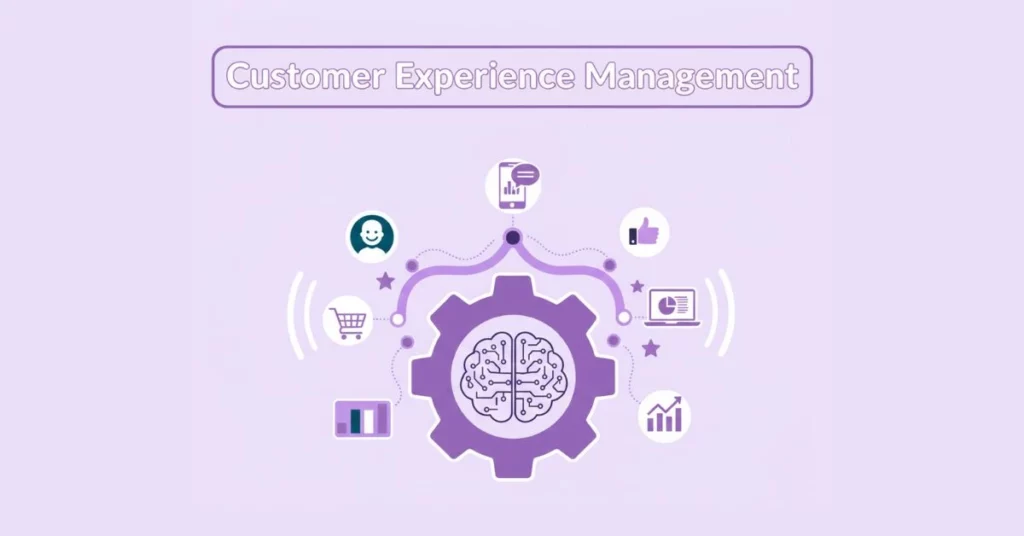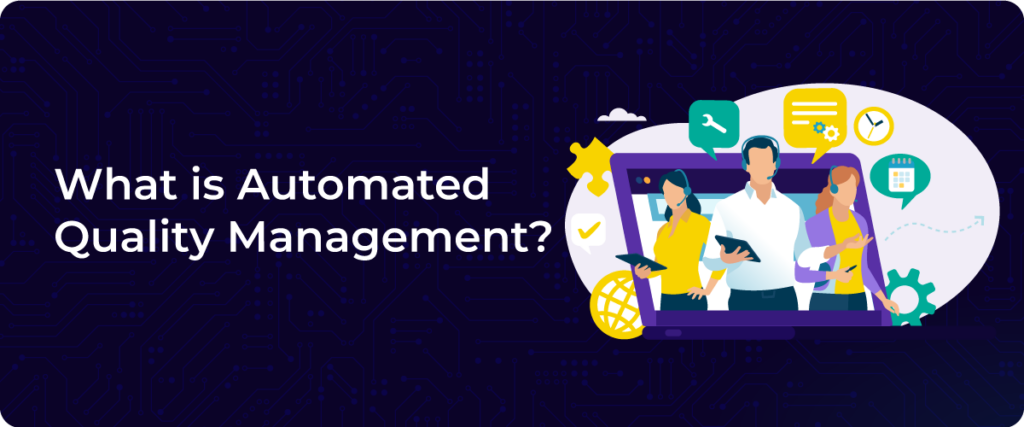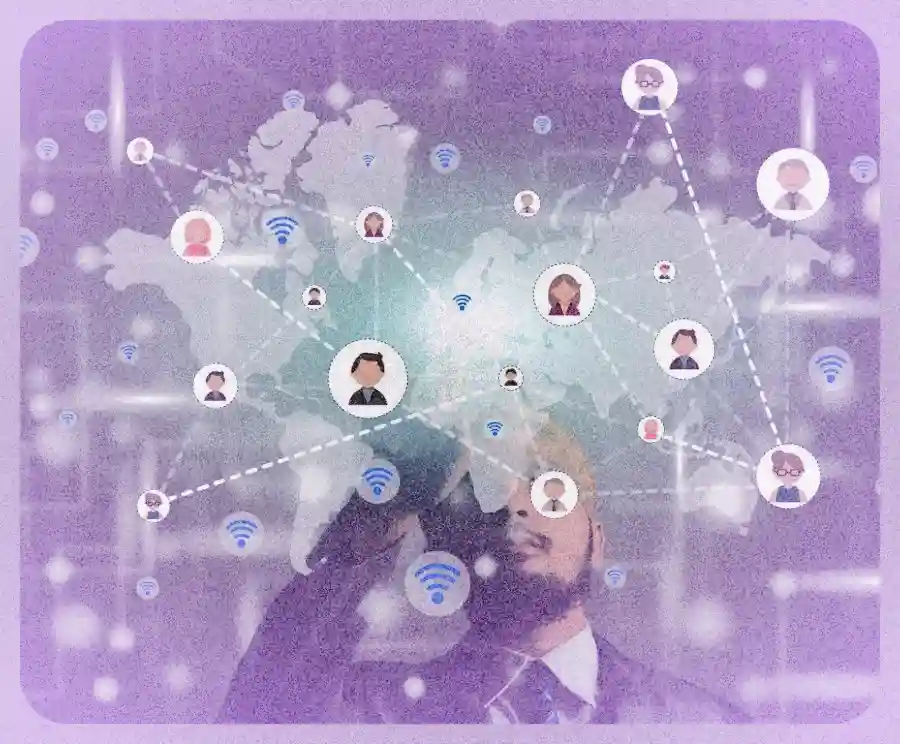Customer experience management is a well structured approach that helps in creating, analyzing, monitoring and optimizing every interaction a business has with its customer. This helps businesses strengthen loyalty, streamline digital operations, deliver consistent and personalised experiences to customers at every touchpoint. An effective CXM enhances customer satisfaction, increases retention chances and generates long time revenue growth.

What is Customer Experience Management (CXM)?
Customer Experience Management (CXM) is the practice of overseeing and optimizing all customer interactions throughout their lifecycle with a business. It integrates processes, data, and technology to create seamless, personalized experiences across every touchpoint, digital, physical, or conversational.
At its core, it ensures that customers feel understood, valued, and supported at each stage of their journey. It captures customer feedback, analyzes behavioral patterns, and empowers businesses to improve service quality continuously. For digital-first brands, digital customer experience management is vital because customer journeys increasingly happen across apps, chatbots, email, and automated channels.
A strong CXM foundation ensures consistency, reduces friction, and aligns every department, sales, support, marketing, and operations, toward delivering superior customer outcomes. You can also explore how consistent experiences strengthen retention in this guide on customer loyalty.
How Digital Customer Experience Management (CXM) Works?
CXM works by collecting customer data, mapping journeys, and using insights to improve interactions at every stage. A typical CXM workflow includes:
1. Data Collection Across Touchpoints
It gathers inputs from conversations, support tickets, digital interactions, feedback surveys, and behavioral actions. This data helps identify challenges and opportunities.
2. Journey Mapping
Businesses map the customer journey, awareness, consideration, purchase, support, and retention, to understand needs and expectations at each moment.
3. Continuous Experience Monitoring
Using a customer experience management platform, brands monitor sentiment, satisfaction, and performance indicators in real time.
4. Insights and Analytics
AI-based analytics identify bottlenecks, recurring issues, and improvement opportunities. This enables businesses to proactively refine customer-facing processes.
5. Personalization Engine
CXM tools personalize communication, recommendations, and service interactions to make experiences more relevant and human-like.
6. Actionable Improvements
Insights are transformed into operational actions, updated workflows, automated responses, improved support training, or faster issue resolution. Measuring long-term business impact becomes easier when paired with metrics like Customer Lifetime Value.
Benefits of Digital Customer Experience Management
Implementing strong CXM practices delivers transformative benefits:
1. Improved Satisfaction and Loyalty
Customers respond positively to consistent, intuitive experiences. CXM ensures that every step, from onboarding to support, is smooth and friction-free.
2. Higher Retention and Lower Churn
Happy customers stay longer, and CXM helps detect dissatisfaction early and enables brands to take corrective actions before customers leave.
3. Enhanced Digital Interactions
With digital customer experience management strategy, brands can refine online journeys, automate responses, reduce wait times, and maximize convenience.
4. Increase in Customer Lifetime Value (CLV)
Personalized support and seamless interactions encourage repeat purchases, cross-sells, and upsells.
5. Better Operational Efficiency
Modern customer experience management strategy helps streamline workflows, minimize manual tasks, and help teams focus on strategic actions.
6. Competitive Differentiation
In saturated markets, CX becomes a stronger differentiator than price or product features. Businesses aiming for operational excellence often complement CXM with tools like call recording software to capture insights from voice interactions.
Importance of Customer Experience Management (CXM)
A customer experience management strategy is essential for guiding customers through a seamless, meaningful, and frustration-free journey. Today’s customers expect brands to understand their needs instantly, respond proactively, and offer personalized experiences across every channel.
Here’s why it is crucial for a healthy customer lifecycle:
1. Creates a Smooth End-to-End Journey
A well-executed customer experience management approach eliminates roadblocks at each touchpoint, making information accessible, simplifying processes, and ensuring consistent support.
2. Strengthens Emotional Connection with Customers
Loyalty stems from emotional trust. When customers feel heard, supported, and valued, they develop strong, lasting bonds with the brand.
3. Enables Predictive and Proactive Support
AI-driven customer experience management solutions can detect problems before they escalate, helping brands solve issues early and impress customers with proactive service.
4. Facilitates Personalized Experiences at Scale
Personalization is no longer optional. Customer experience management solutions help tailor communication, offers, and interactions based on behavior and preferences.
5. Drives Long-Term Advocacy
Satisfied customers become brand advocates, organically boosting reputation and referrals. Insights from conversations become even more powerful when paired with advanced analytics like Call Detail Record analysis.
In short, Customer experience management isn’t just about improving experiences, it’s about building long-term loyalty and transforming customers into lifelong supporters.
Difference Between Customer Experience Management (CXM) vs CRM
Many businesses confuse CXM with CRM, but they serve different purposes:
| Aspect | Customer Experience Management (CXM) | Customer Relationship Management (CRM) |
| Focus | Holistic customer experience across all touchpoints | Managing customer data and transactions |
| Goal | Deliver seamless, personalized experiences | Organize and track customer information |
| Approach | Emotion-driven, journey-focused | Data-driven, sales-focused |
| Tools | Sentiment analysis, journey analytics | Lead management, sales forecasting |
| Outcome | Higher loyalty and satisfaction | Improved sales and customer records |
Common Challenges Faced in Customer Experience Management
Despite its importance, businesses struggle with:
1. Fragmented Customer Data- Data scattered across tools makes it difficult to form a unified customer view.
2. Inconsistent Experiences Across Channels- Without digital customer experience management, customers experience varying levels of service quality on phone, chat, and email.
3. Slow Response Time- Delayed support leads to frustration and lost trust.
4. Manual Processes- Human-driven workflows slow down customer interactions and increase errors.
5. Lack of Real-Time Insights- Without real-time analytics, teams react late to customer issues.
6. Outdated Technology Stack- Legacy systems cannot support modern CX expectations like automation and personalization. AI-led improvements such as conversational automation begin with understanding core concepts like Voice AI.
Strategies to Create an Effective Customer Experience Management Plan
These strategies help businesses build a strong and actionable CXM framework:
1. Map the Entire Customer Journey
Identify key touchpoints and evaluate pain points across the funnel.
2. Implement a Customer Experience Management Platform
A centralized platform helps track interactions, analyze sentiment, and personalize experiences at scale.
3. Build a Data-Driven Customer Experience Management Strategy
Use real-time analytics to make decisions based on behavior, feedback, and trends.
4. Leverage AI for Personalization
AI and automation improve relevance and speed, enhancing digital interactions.
5. Train Customer-Facing Teams
Skill development ensures more empathetic and effective communication.
6. Use Feedback Loops Continuously
Real-time feedback helps prevent dissatisfaction and improve processes instantly.
7. Create an Omnichannel Experience
Ensure consistency across chat, email, mobile apps, websites, and call centers.
8. Monitor KPIs and Adjust Regularly
Track NPS, CSAT, CES, and FRT to evaluate CX health. Teams also rely on solutions like call center QA scoring software to consistently monitor quality.
Tools to Manage Customer Experience Management (CXM)
A combination of technology solutions is essential to implement customer experience management effectively. Common categories include:
1. AI-Powered Conversation Intelligence Tools- These analyze calls, chats, and conversations to measure sentiment, quality, and customer intent.
2. Customer Experience Management Tools – Tools that centralize customer insights, map journeys, and automate workflows.
3. Customer Experience Management Solutions – These provide end-to-end services, including analytics, feedback management, surveys, and automation.
4. Customer Experience Management Systems- Systems that bring together support, sales, and marketing for unified customer handling.
5. Feedback and Survey Platforms- Collect structured and unstructured customer insights.
6. Analytics and Dashboards- Offer real-time data visualization for decision-making. Many businesses also rely on platforms for agent oversight like call center monitoring.
Compliance and Customer Experience Management (CXM)
Since CXM deals with sensitive customer data, compliance and security are critical.
1. Data Encryption and Secure Storage- All customer data must be encrypted during transit and at rest.
2. Regulatory Compliance- Businesses must adhere to GDPR, HIPAA, PCI-DSS, SOC 2, RBI, and industry-specific regulations.
3. Access Control and Authorization-Role-based access ensures sensitive information is restricted to relevant teams.
4. Monitoring and Auditing-Security logs, audits, and threat detection systems help prevent breaches.
5. Privacy-First Architecture- Customer trust depends on transparent data handling practices. Many organizations enhance security and operational oversight with dedicated tools such as call center efficiency platforms.
When great customer experience management platforms integrate compliance and security, customers feel safe engaging with digital platforms, building long-term confidence.
How to Implement Customer Experience Management Across Industry Verticals
Implementing Customer Experience Management (CXM) looks different across industries, because each sector has its own challenges, compliance requirements, customer behavior patterns, and touchpoints. However, the core objective remains the same, designing an end-to-end journey that is seamless, personalized, and convenient. Below is a brief breakdown of how CXM adapts across various sectors:
1. BFSI
The BFSI industry operates in a high-trust environment where accuracy, compliance, and efficiency define customer satisfaction. CXM helps financial institutions modernize legacy customer journeys and reduce friction at every step.
How it is implemented in BFSI:
- Digitizing onboarding and KYC journeys: This system streamlines KYC verification, document submissions, identity checks, and approvals. This reduces manual errors and improves first-time resolution.
- Personalized advisory and relationship management: With detailed customer insights, banks can tailor investment suggestions, loan recommendations, or policy renewals based on individual profiles.
- Sentiment-aware interactions: AI-driven conversation intelligence monitors tone, satisfaction, and frustration in customer communication to improve responsiveness.
- Operational transparency: Customers expect real-time updates on claims, loans, transactions, and approvals. CXM platforms automate notifications, lowering inbound queries and boosting trust.
- Fraud-safe communication: Secure digital channels and identity validation reduce risks while improving customer confidence.
A strong CXM approach in BFSI builds trust, one of the most critical elements in long-term financial relationships. To further enhance operations, many BFSI firms now adopt automated call center capabilities for customer service scalability.
2. HealthTech
Healthcare interactions carry emotional weight. Patients expect clarity, empathy, and quick access to information. CXM ensures that the entire healthcare journey, from booking appointments to post-consultation follow-ups, is effortless and reassuring.
How CXM supports HealthTech:
- Streamlined patient onboarding: Digital forms, automated reminders, and seamless check-ins reduce waiting times and operational overhead.
- AI-powered virtual assistance: Chatbots and conversational AI help patients quickly access FAQs, reports, prescriptions, and appointment details.
- Care journey visibility: CXM systems track patient experience across diagnosis, treatment, and recovery, giving healthcare providers insight into concerns or gaps.
- Hyper-personalized care: Automated follow-ups, medication reminders, and recovery check-ins enhance patient engagement.
- Privacy-focused architecture: Healthcare CXM must follow HIPAA and similar regulations, ensuring patient data remains secure and confidential.
CXM helps healthcare organizations deliver experiences that feel organized, compassionate, and patient-centric. Many organizations complement CXM with broader workflow systems like call center management.
3. E-Commerce
In eCommerce, experience is everything. With customer journeys moving entirely online, even small friction points, like slow support or confusing navigation, impact sales. CXM connects every component of the shopping journey and ensures brands meet expectations instantly.
How CXM transforms eCommerce:
- Automated order and logistics updates: Customers receive real-time notifications about shipment status, returns, cancellations, and refunds, reducing anxiety and support volume.
- Personalized product discovery: CXM tools analyze browsing and purchase behavior to recommend items that match customer interest, driving conversions.
- Real-time support at critical moments: Proactive assistance during checkout, payment failures, or cart abandonment increases purchase success rates.
- Post-purchase experience optimization: Automated feedback collection, service updates, and delivery tracking strengthen customer trust.
- Unified omnichannel experience: Whether customers engage via website, app, WhatsApp, or social media, CXM ensures consistency and continuity.
In a highly competitive market, CXM becomes a core driver for repeat purchases and brand loyalty, especially when integrated with operational enhancers like call center efficiency tools.
4. EdTech
EdTech platforms serve diverse users, students, parents, teachers, and institutions, each with different expectations. Implementing CXM helps create a smooth learning experience while reducing support workload.
Key CXM implementations in EdTech:
- Personalized learning journeys: CXM systems adapt content, recommendations, and progress insights based on learner behavior and performance.
- Automated student support: Chatbots handle large volumes of repetitive queries, enrollment issues, syllabus doubts, course navigation, freeing human teams for complex cases.
- Parent and teacher engagement: Automated progress reports, reminders, and feedback loops enhance communication and transparency.
- Frictionless onboarding: Smooth sign-ups, payment flows, and course activation reduce drop-offs.
- Early detection of learner challenges: Sentiment and behavior analysis help identify disengaged students, enabling timely intervention.
Strong CXM helps EdTech brands support students at every stage of learning, improving retention and outcomes.
5. Automobile Sector
Customer experience in the automobile industry spans pre-purchase, purchase, and long-term ownership. Customer experience management platforms ensures consistency across these stages, improving trust and brand loyalty.
How CXM is used in the automobile industry:
- Automated test-drive and service scheduling: Customers easily book visits, receive reminders, and get updates through automated CXM workflows.
- Real-time satisfaction tracking: At each touchpoint, inquiry, finance, delivery, service, CXM platforms analyze customer sentiment to improve processes.
- Personalized ownership journey: Service reminders, maintenance tips, insurance renewals, and warranty information are tailored to each customer’s vehicle and usage.
- Frictionless after-sales support: CXM unifies dealership communication, service center updates, and customer complaint resolutions.
- Digital-first buying support: Virtual assistants guide customers through models, pricing, financing options, and comparisons.
In an industry where long-term brand loyalty drives repeat purchases, CXM becomes a strategic advantage.
Enhance your Digital Customer Experience Management with ConvoZen
ConvoZen.AI proves to be one of the most reliable customer experience management tools as it helps businesses deliver world-class customer experience management by combining conversational intelligence, real-time sentiment analysis, and AI-driven automation in one unified platform.
It enhances agent performance, uncovers friction points across channels, ensures strong compliance, and enables scalable, personalized digital journeys for every customer. ConvoZen gives enterprises everything they need to elevate CXM end-to-end across teams, touchpoints, and workflows.
Book a demo to see how ConvoZen transforms your customer experience.
FAQs
Customer Experience Management (CXM) is the practice of tracking, analyzing, and improving every customer interaction to deliver personalized, and satisfying experiences across all touchpoints.
CXM helps businesses enhance customer satisfaction, improve retention, identify pain points, personalize interactions, and deliver consistent experiences throughout the customer journey.
CRM manages customer data and transactions, while CXM focuses on improving the overall customer experience and emotional journey across touchpoints.
CRM centers on relationship and data management, while CEM (or CXM) emphasizes experience design, personalization, and journey optimization.
Brands often struggle with inconsistent experiences, slow responses, fragmented data, and low customer satisfaction without a structured CXM framework.


